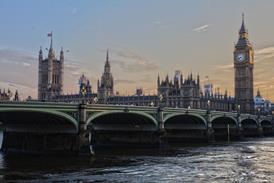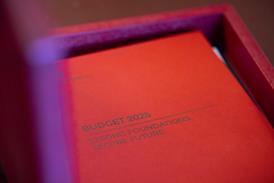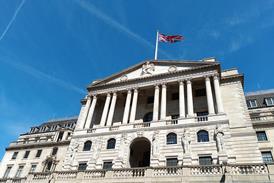Summer Budget: Chancellor George Osborne today unveiled a green paper proposing a significant overhaul of the current pensions tax relief system, going beyond what the industry had expected and acting as a harbinger of further radical reform.
Osborne described how the so-called freedom and choice reforms, announced in last year’s Budget, had addressed several pension issues around flexibility facing those nearing retirement but that it was now “time we looked at the other end of the age scale”.

In his summer Budget speech, he said: “I am open to further radical change”, adding: “Pensions could be treated like Isas. This idea and others like it need further consideration before taking it forward.”
Impact on DB
Calum Cooper said the annual allowance tax change comes at an unhelpful time for defined benefit schemes amid a backdrop of ultra-low long-term interest rates and the end of contracting-out.
“These tax changes will lead to further senior disengagement in DB pensions and so play a weighty part in more scheme closures over the coming nine months,” he said, “comfortably reaching the halfway mark of full scheme closure for UK DB schemes.”
Cooper also said some DB members ran the risk of a double tax hit.
“The confirmation of the tapering of annual allowance to £10,000 will lead to anyone earning a DB pension of more than £700 a year starting to pay tax on the excess at the point it is earned and then again when it is drawn down.
“Without careful planning, members run the risk of potentially incurring a round trip tax of greater than 65 per cent. This is likely to reduce the levels of engagement from higher earning DB savers and will lead to a quickening of the pace for scheme closures.”
But in order to bring the two savings vehicles closer together, a fundamental aspect of the current pensions tax structure would need to be revised.
An article in the Financial Times on Friday said the Treasury could consider removing tax relief altogether on pension contributions going in, and instead not tax withdrawals on the way out.
This model would completely turn on its head the traditional EET pensions model – exempt on the way in, exempt while invested, taxed on the way out – and would flatter Treasury finances over coming years.
Osborne also confirmed the widely trailed plan to taper down the annual allowance for tax-free pension saving to £10,000 from £40,000 for those earning more than £150,000.
Industry reaction
Joanne Segars, chief executive at the National Association of Pension Funds, condemned the continuation of political tinkering and said it would work closely with its members on any possible changes.
“It is a very tricky issue, something we have been looking at with our councils – there are no easy solutions,” she said.
Segars said there were also a number of key changes “buried away in the red book”.
If providers had to administer two separate pots it would be a nightmare and it would create huge difficulties in terms of member communication
Tim Smith, Eversheds
“The secondary market for annuities… has been pushed back to 2017 to really make sure there can be a robust package of consumer protections put in place.”
Tim Smith, senior associate at law firm Eversheds, said moving from an EET to a TEE system could potentially add complexity rather than simplify the system, and also contain practical barriers.
“If providers had to administer two separate pots it would be a nightmare and it would create huge difficulties in terms of member communication,” Smith said. “This would represent another major challenge for providers particularly in the low-cost environment in which they are now required to operate.”
Treatment of existing pots
Claire Carey, partner at law firm Sackers, pointed to the question of how existing pots would be taxed.
One common argument against the TEE model is that nobody can guarantee future governments will not legislate to resume taxing pensions in withdrawal.
However, Michael Johnson, a research fellow at the Centre for Policy Studies, who has long advocated the idea of a TEE structure, said: “The argument about ‘do you trust the government?’ is just a fact of life. If you don’t like them vote them out.”
But added: “There’s pretty much a golden rule in the Treasury and government that you don’t tax people twice,” he said.
The consultation
The document outlined key principles any tax structure should abide by – namely that it is simple and transparent; allows for personal responsibility; builds on auto-enrolment and is sustainable.
The green paper states: “It has been suggested that a fundamental reform of the system so that pension contributions are taxed upfront… and then topped up by the government, may allow individuals to better understand the benefits of contributing to their pension as the government’s contribution might be more transparent,” adding “Many other variants have also been suggested.”
We have just had the most radical reform for 100 years and now, three months later, are at it again
Matthew Giles, Squire Patton Boggs
Matthew Giles, pensions partner at law firm Squire Patton Boggs, said the paper could see the industry overcome by “reform fatigue”.
“We have just had the most radical reform for 100 years and now, three months later, are at it again.”
He added: “Frankly, it doesn’t seem like the industry’s pleas for a period of regulatory stability have been heard.”
However Arron Slocombe, partner at law firm Baker & McKenzie said any changes resulting from the green paper would not be felt for some time.
“This will no doubt keep everyone busy as the green paper is pored over, but unlike the 2014 Budget the impact, if any, will not be immediate,” he said.
Ian McQuade, client director at Muse Advisory, agreed. He said the government’s more considered approach to reform compared with the 2014 Budget seemed “incredibly sensible”.
This will no doubt keep everyone busy as the green paper is pored over, but unlike the 2014 Budget the impact, if any, will not be immediate
Arron Slocombe, Baker & McKenzie
“Rather than rushing something through they’re seeking views as to the best way to increase the level of savings,” he said. “Much better than the alternative of just deciding what they want to do and imposing it upon us.”
There was almost a sense of relief from some in the industry. Gurmukh Hayre, head of DC at advisory company KPMG, said there was an expectation of a change to salary sacrifice.
“That would have caused a lot of headaches for employers and trustees alike,” Hayre said. “Putting a green paper out about the way pensions are taxed – it will be interesting to see how that turns out.”
Public sector pressures
However, Calum Cooper, partner and head of trustee DB at consultancy Hymans Robertson, said a change towards a TEE model posed particular problems for the public sector.
“Public sector schemes were promised no changes to their pensions for a generation,” he said. “Removing tax relief, by moving to a ‘taxed, exempt, exempt’ regime as floated in the consultation paper, would mean that many will be hit with an unexpected tax bill.
“For example, if we move to this [TEE] model this could reduce take-home pay in the local government pension scheme in England and Wales by £400m each year. A local government worker on an average salary of around £17,000 will see a reduction in take home of £220 a year.”
Cooper added this latest move fortified the argument for an independent pensions commission.
The government’s consultation closes on September 30.
The original version of this article mistakenly had a crucial ‘not’ missing in this sentence. It has since been updated.














